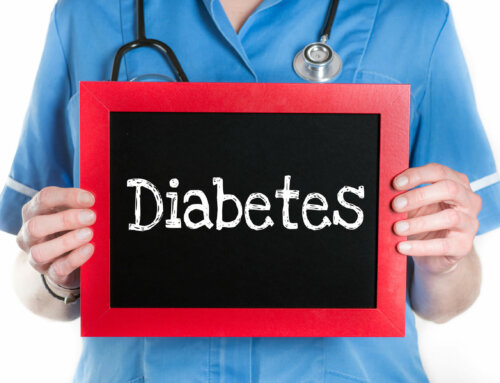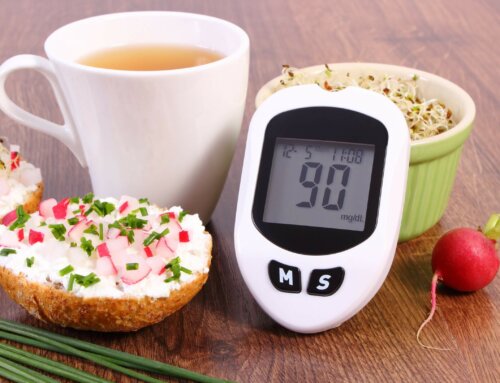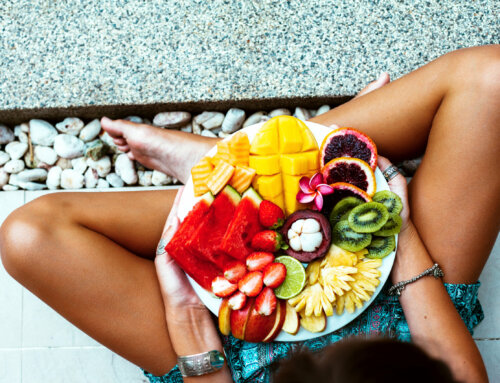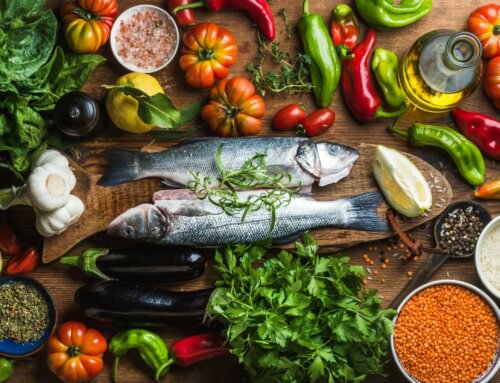It is a known fact that commercial food companies keep adding sugar to processed and packaged foods as the years go on. One specific theory is called “adaptation levels.” That means that people get used (or acclimatized) to a certain level of sweetness or satisfaction.
If this intense flavor stimulation is not continuously met then the flavor becomes boring, bland and virtually tasteless. Therefore the companies keep adding more and more hidden sugar. Most patients say they never add sugar to their foods – but are unaware of those already containing added sugar. According to the American Heart Association the amount of added sugar should be 6 teaspoons (or 24 grams) per day for women or 9 teaspoons (or 36 grams) a day for men. With diabetes it is suggested that even less added sugar is warranted to help maintain good daily blood sugars and A1C levels. The average person eats about 22-30 teaspoons of added sugar per day! Multiple discussions on the topic have concluded that even excessive amounts of artificial sweeteners are a concern, even though they are allowed for people with diabetes. Artificial sweeteners have a greater concentration of sweetness compared to regular sugar. Again the theory is it just gets you used to that sweet taste and you begin to crave it even more. Changing tastes are usually difficult after a lifetime of eating preferences have been established; it is basically what you grew up with as far as eating and the tastes you expect. Reducing intake of sugar or sweets over time will help. You are often asked to reduce your sodium intake because of hypertension and you focus on label reading as well as a reduced addition of salt to your food. The same approach is taken with fat. Think about milk. If you are used to drinking skim milk, then drinking whole milk seems like drinking half and half cream. Of course the opposite is true as well; it is difficult to get patients to switch to fat free milk from regular milk. Usually they accomplish this in steps going from whole milk or 4%, to 2%, to 1% and finally drinking skimmed milk. Taste buds adapt with time. Taste buds change as we age. Learn to read labels and look for words including “high fructose corn syrup”, “honey”, “brown sugar”, “corn sweetener”, “cane sweetener”, “molasses”, “syrup”, “cane syrup”, “dextrose”, “lactose”, “fructose”, “maltose”, “sucrose”, “glucose”, or “agave nectar”. The list goes on and you need to be aware. The producer has to list the amount of sugar per serving in the ingredients but it does not have to tell you if it is natural or added sugars.
Foods to think about with added sugars (this is definitely a partial list but it will help get you started):
- Jarred pasta sauces – Tomatoes are a good source of lycopene (a great anti-oxidant) especially when they are cooked or in sauces. It is known to lower the risk of prostate cancer and heart disease. Remember to look at labels and see what order the ingredients are in. Those that are the largest amount are listed first. Make sure the label says tomatoes, tomato puree or tomato products as the primary ingredients. Compare amounts of sugar in your product.
- Yogurt – Yogurt is a fabulous food for almost everyone but not when it has a ton of added sugars. If it says “Double chocolate creamy rich yogurt” you can bet it has added sugar. Flavors like vanilla, lemon and coffee also tend to have added sugar. Some yogurts have up to 50% added sugar. Watch yogurt with “fruit on the bottom” since it is not real fruit but fruit concentrate with added sugars. Look for low fat/light types or stick to natural or plain yogurt and add your own fruits, nuts and a dash of cinnamon. Plain yogurt has more potassium which is a benefit to most. Try to find one with 15 grams of sugar since the first 12 grams are from the actual yogurt.
- Oatmeal – Oatmeal is an excellent choice since it contains fiber, helps you have a full feeling and can reduce your cholesterol. The problem comes when the assorted single packages are flavored and loaded with added sugar. Flavors like Berry Crunch, Maple Walnut or Brown Sugar are a dead giveaway. There are 4 teaspoons of sugar in the flavored choices. Again try plain and add your own toppings or get the low sugar variety if you can not tolerate the plain.
- Juice cocktails – Most know that regular soda is not on the go to list for beverages when you have diabetes but forget about regular fruit juices as well. There are diet brands available and you may need some time to get used to them but you will be cutting over 7 teaspoons of sugar if you give up grape, cranberry, apple or other regular fruit juices.
- Fat free salad dressings and generally fat free packaged products – Many times a reduction in fat means an increase in sugar to replace the taste. They will also load up on sodium to give back the flavor. Read the labels and see what is included. Better yet think about lemon juice, flavored vinegars, a bit of olive oil and you will save money and increase the flavor without the sugar.
Remember there are many foods that can give you that sweet and satisfying taste without added sugar. Think about pineapple, peaches, berries, and bananas in limited amounts. Watch for the Macintosh apple since it is fall season. Bake with cloves, lemon and cinnamon and add a splash of diet cherry or ginger ale soda and you will know natural sweetness. Enjoy!
NOTE: Consult your Doctor first to make sure my recommendations fit your special health needs.












Leave A Comment